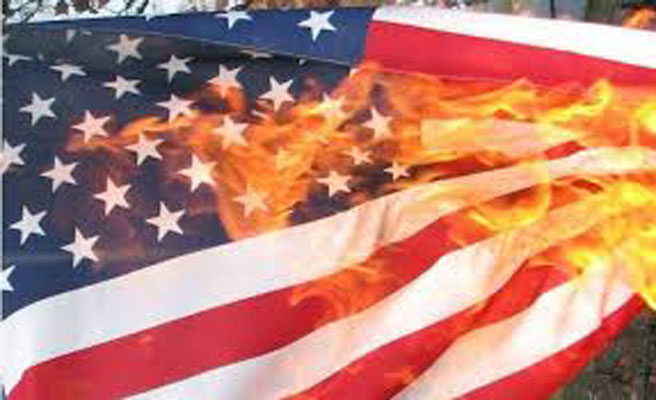By Jon Johnson
SAFFORD – A person’s right to protest the government is sound but the desecration of another’s property and sheer stupidity of lighting unattended fires easily reaches the level of criminality.
A Safford officer was dispatched at about 6 a.m. to the 1100 block of S. Central Avenue after an anonymous text-a-tip advised items were burning on the sidewalk near the Olney House.
Upon arrival, the officer located a pile of blue and white rope along with a synthetic material that had been burned. Additionally, there was a plastic grocery bag with peaches and plums that appeared to have been picked off nearby trees. The officer also noticed several bags of grass clippings through the neighborhood that appeared to have been set on fire and then doused with water.
Shortly after clearing the area, the officer received a call from the owner of the Olney House who said she had gone for a walk earlier that morning and saw the burned item on her sidewalk as well as the grass clippings around the corner. She said she doused the grass clipping fires with water and advised that the burned item on her sidewalk may have been an American flag that her neighbor was missing from his flag pole.
The officer proceeded to the neighbor’s residence on Central Avenue and discovered the same blue and white rope attached to a flag pole. The rope had been cut and the flag was missing.
In 1989, the United States Supreme Court ruled 5-4 in a landmark First Amendment decision of Texas v. Johnson that burning an American flag was symbolic speech that could be expressed.
The Supreme Court ruling overturned the 1968 Federal Flag Desecration Law that was enacted by Congress after a Vietnam War protest.
In 1984, Gregory Lee Johnson burned a flag at the Republican National Convention in Dallas. Officials in Texas arrested Johnson and convicted him of breaking a Texas law that prohibited desecration of the flag; he was sentenced to one year in prison and ordered to pay a $2,000 fine. The Court of Appeals for the Fifth District of Texas at Dallas affirmed Johnson’s conviction, but the Texas Court of Criminal Appeals reversed, and the Supreme Court affirmed.
Congress then passed the Flag Protection Act of 1989 in response to the Johnson decision, however, in 1990, the Supreme Court ruled 5-4 in United States v. Eichman that the act passed by Congress was unconstitutional and reaffirmed the right to burn the flag.
While burning the flag in protest is generally frowned upon by the populace, retiring an American flag by fire is also the proper way to dispose of old, tattered flags and is done so with honor. (See Gila Herald: Eagle project retires 128 U.S. flags by fire – May 4, 2018)
Gila Herald Video/Boy Scouts retire flags by burning
In the recent Safford incident, however, the flag in question was stolen from a resident’s property. In that case, it would be considered not only theft to steal the flag but also criminal damage for burning it.
After interviewing the residents, the officer left but later in the afternoon “ensured” that the residents had a new American flag to fly in place of the one that was destroyed.
There were no leads to as who committed the theft and criminal burning.









